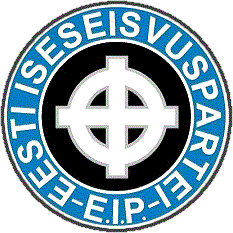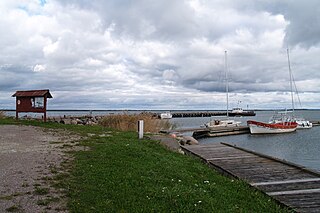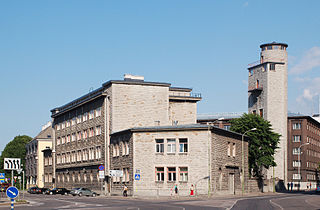The Republic of Estonia gained its independence from the Russian Empire on 24 February 1918 and established diplomatic relations with many countries via membership of the League of Nations. The forcible incorporation of Estonia into the Soviet Union in 1940 was not generally recognised by the international community and the Estonian diplomatic service continued to operate in some countries. Following the restoration of independence from the Soviet Union, Russia was one of the first nations to re-recognize Estonia's independence. Estonia's immediate priority after regaining its independence was the withdrawal of Russian forces from Estonian territory. In August 1994, this was completed. However, relations with Moscow have remained strained primarily because Russia decided not to ratify the border treaty it had signed with Estonia in 1999.

Tallinn is the most populous and capital city of Estonia. Situated on a bay in north Estonia, on the shore of the Gulf of Finland of the Baltic Sea, Tallinn has a population of 437,811 and administratively lies in the Harju maakond (county). Tallinn is the main financial, industrial, and cultural centre of Estonia. It is located 187 km (116 mi) northwest of the country's second largest city Tartu, however only 80 km (50 mi) south of Helsinki, Finland, also 320 km (200 mi) west of Saint Petersburg, Russia, 300 km (190 mi) north of Riga, Latvia, and 380 km (240 mi) east of Stockholm, Sweden. From the 13th century until the first half of the 20th century, Tallinn was known in most of the world by variants of its other historical name Reval.

Tallinn Airport or Lennart Meri Tallinn Airport is the largest airport in Estonia, which serves as a hub for the national airline Nordica, as well as the secondary hub for AirBaltic, cargo airline Airest and LOT Polish Airlines. It was also the home base of the now defunct national airline Estonian Air. Tallinn Airport is open to both domestic and international flights. It is located 2.7 nautical miles southeast of the centre of Tallinn on the eastern shore of Lake Ülemiste. It was formerly known as Ülemiste Airport.

The University of Tartu is a university in the city of Tartu in Estonia. It is the national university of Estonia. It is the only classical university in the country, and also its biggest and most prestigious university. It was founded under the name of Academia Gustaviana in 1632 by Baron Johan Skytte, the Governor-General (1629–1634) of Swedish Livonia, Ingria, and Karelia, with the required ratification provided by his long-time friend and former student – from age 7 –, King Gustavus Adolphus, shortly before the king's death on 6 November in the Battle of Lützen (1632), during the Thirty Years' War (1618–1648).

.ee is the internet country code top-level domain (ccTLD) of Estonia, operated by the Estonian Internet Foundation.

The Estonian Independence Party was a far-right nationalist political party in Estonia 1999-2022. The party, founded in 1999, is a successor to the Estonian Future Party. One of the principal aims of the party is the withdrawal of Estonia from the European Union. The party is currently without parliamentary representation.

Aa is a village in northern Estonia, on the southern coast of the Gulf of Finland in the eastern part of the Lüganuse Parish of Ida-Viru County, 10 km (6.2 mi) from Lüganuse. Part of the village, including the Aa manor house, is situated on the North Estonian limestone bank.

Andres Oper is an Estonian football coach and former professional player. He is currently an assistant manager of FC Levadia Tallinn.
Internet in Estonia has one of the highest penetration rates in the world. In the first quarter of 2010, 75% out of 1.34 million people in the country used the Internet according to Statistics Estonia. In 2017, according to the World Bank came 13th in the world by the percentage of population using the Internet, with 88.1% people using it.
Värska is a small borough in Setomaa Parish, Võru County in southeastern Estonia. At the 2011 Census, the settlement's population was 443.
Viidu is a village in Saaremaa Parish, Saare County in western Estonia.

Orissaare is a small borough in Saaremaa Parish, Saare County in western Estonia on the island of Saaremaa.

Estonian Firefighting Museum is a museum in Tallinn devoted to introducing the historical heritage of firefighting in Estonia. The first volunteer fire department in Estonia was created in 1788, by the Brotherhood of the Blackheads, which was one of the first firefighting brigades in contemporary Europe. First professional fire departments were established shortly after the end of the First World War, in 1919.

Suislepa is a village in Viljandi Parish, Viljandi County, Estonia. Until the 2017 administrative reform of Estonian municipalities the village was located in Tarvastu Parish.The population as of 2014 was 305 people. It is 42 km southeast of the town of Viljandi, near the southern coast of Võrtsjärv lake.
Ämmuste is a village in Viljandi Parish, Viljandi County, Estonia. Until the 2017 administrative reform of Estonian municipalities the village was located in Tarvastu Parish. It is located 6.4 km south of the small borough of Mustla and 24 km southwest of the town of Viljandi near the border of Valga County. As of 2011, Ämmuste had a population of 15 residents, a decrease from 22 in the 2000 census. These figures, however, do not reflect the population number when students and faculty of Ämmuste School are factored in.

Jan Uuspõld is an Estonian stage, television, radio and film actor and musician.

Estonia competed at the 2018 Summer Youth Olympics, in Buenos Aires, Argentina from 6 October to 18 October 2018.

The Jägala is a 98.8 km (61.4 mi) long river in northern Estonia that flows into the Gulf of Finland in Jõesuu, Harju county.
Estonian pavilion houses Estonia's national representation during Venice Biennale arts festivals.















